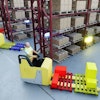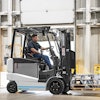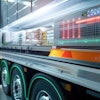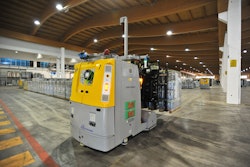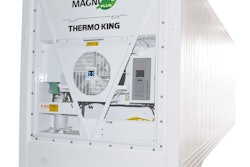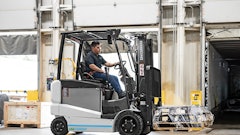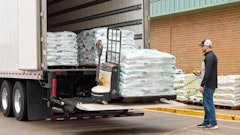
Between 2006-2017, there have been 111 dust incidents in the United States that resulted in 66 fatalities and 337 injuries, according to the U.S. Chemical Safety Board (CSB). Every year, dust cloud flash fires and explosions cause catastrophic events involving fatalities, injuries, community impact, facility damage and economic losses. The industry with the highest percentage of incidents, according to a 2006 study prepared by the CSB, is food products, where, between 1980-2006, 24% of all reported dust incidents occurred.
Understanding dust explosions
Just about any solid material that burns can be explosible when finely divided into a dust. As explained by the U.S. Occupational Safety & Health Administration (OSHA), “When combustible dust in the proper concentration is dispersed in a cloud, and then ignited, a flash fire occurs. When a flash fire is confined, the pressure that developed can cause an explosion, damaging or destroying the confining enclosure. The confining enclosure could be processing equipment, a conveyor, a dust collector, a room or an entire building.”
The blast wave can also disperse accumulated combustible dust in work or storage areas, fueling one or more subsequent explosions. These secondary explosions are often more destructive than the initial incident due to the large quantities of dust dispersed. Secondary explosions can continue to ignite in sequence, cascading throughout a facility.
“Dust may accumulate on surfaces and lie undisturbed for years,” CSB notes. “Then an initial fire or explosion shakes it loose and it ignites. The resulting pressure then travels throughout a plant or factory and dislodges dust that has been lying dormant, serving as fuel for a secondary explosion.”
Combustible dust is a critical concern for any industry that processes and conveys bulk solid materials. Changes in regulations have brought this issue into even greater focus. The National Fire Protection Association (NFPA) has issued stricter safety standards to prevent and mitigate explosions and fires in plants where combustible dust is present.
NFPA 654, Standard for the Prevention of Fire and Dust Explosions from the Manufacturing, Processing, and Handling of Combustible Particulate Solids contains comprehensive guidance on the control of dusts to prevent explosions. This standard states that in the case of dust cloud flash fires (deflagrations) the following conditions must be simultaneously present—(a) A combustible powder, with enough dust content (small particle size) to support flame spread, forming a cloud with a concentration above its minimum explosible concentration; (b) sufficient oxidant, which typically the oxygen in air will provide; and (c) an ignition source with sufficient energy.
Conditions “a” and “b” are usually present, at least at some point, during any powder/dust handling, transfer, processing, dust collection or packaging operation. The simultaneous existence of an energetic ignition source will result in a dust cloud flashfire.
NFPA 654 states, “Consideration should be given to appropriate equipment design for dust containment and release source reduction. Since dust accumulations on surfaces outside of processing equipment could result in devastating secondary dust cloud explosion hazards, an effective housekeeping program must be enacted to manage dust accumulations on all surfaces in the facility.”
Conveying systems and how they may influence dust explosions
Among the most important systems in food manufacturing are the conveying systems employed in direct contact with raw ingredients, blended mixtures and finished products. These systems transport food items between the various production, blending, storage, filling and packaging processes.
Food production facilities use many methods to move bulk solid ingredients through their production processes, such as belt conveyors, screw conveyors, bucket elevators, pneumatic conveyers, tubular drag chain conveyors and tubular drag cable conveyors. Each of these systems have varying levels of dust production, hygienic design and clean-in-place (CIP) functionality to control dust accumulation – critical factors to keep dust concentration below minimum explosible concentration levels.
Following is an assessment of the major types of conveyor systems being employed in transporting dry ingredients for food processing and their relationship to factor influencing dust explosions:
Flat-belt conveyors. Although this type of conveyor can handle friable products gently, the product is exposed to ambient contamination, unless covered. The cover, however, collects residue and must be removed and cleaned between runs to reduce the risk of cross-contamination and dust buildup, a usually tedious task. Product, when introduced onto the conveyor, is typically dropped from a processing machine, which produces product damage and dust.
Bucket elevators. Bucket elevators use a continuous line of buckets, either attached to each other on a rubber belt, or attached by pins to two endless chains running over tracks and driven by sprockets. Centrifugal force throws the product out of the buckets into a discharge spout as the buckets pass. This type of conveyor can transport fragile materials with minimized product damage. But, the system can be very dusty, as dust is generated when the ingredients are loaded into the buckets and while the product is being conveyed, resulting in dust buildup.
Auger conveyors. Known as flexible screw conveyors, they can transport food ingredients vertically, horizontally and at any angle. They consist of a stainless-steel flexible screw enclosed in a rigid steel tube, or flexible plastic tube, driven by a motor. The enclosed tube rotates around a central shaft, transporting the product according to the screw design and rotational direction.
When the ingredients reach the end of the tube it is discharged into a process machine or container for packaging. Auger conveyors, however, have limitations on how much product they can transport before effecting product breakage and producing dust, which can be significant. Internal cleanliness can be an issue, resulting in dust buildup, with the need to disassemble the unit on a regular basis for cleaning.
Pneumatic conveyors. These systems use air to move ingredients from process to process, by generating air pressure levels that are either above or below the atmospheric pressure. There are two main types of pneumatic conveyors—the dilute phase conveyor and the dense phase conveyor, which differ by rate of speed and pressure. Both of these systems can be set up as a pressure or vacuum system. Pneumatic conveyors enable flexibility, allowing them to reach many multiple destinations with one system. They are also able to convey ingredients at very high rates with minimal product breakage and dust dissemination, as dust is accumulated in filters.
Pneumatic systems are essentially pressurized streams of air. Any breach or failure in the pipes, tubes or ducts in a positive pressure operational pneumatic conveying system can release large quantities of combustible dust into the air, and worsen existing hazards by dispersing dust that had settled outside the ductwork.
Tubular drag chain conveyors. Tubular drag chain conveyors gently move food products through a sealed tube with a drag chain pulled through it on a loop. Solid circular discs (flights) are attached to the chain, which push the food ingredients through the tube. These conveyors, with their completely enclosed tubing, contain dust from being released into the work environment, while ensuring a higher level of dust removal compared to bucket, auger, pneumatic, and flat-belt conveyors.
Two types of chain can be used in tubular chain conveyors, link chain or roller chain. Because the entire chain is directly immersed within the food being conveyed, dust and food particles can pack spaces between plates, pins and bushings, and can remain trapped after cleaning, despite dry cleaning and wet-CIP systems.
Mitigating dust explosions
Similar to tubular drag chain conveyors, tubular drag cable conveyors also move dry food ingredients through a sealed tube, gently conveying friable materials, including powders, pellets, flakes, granules, chunks, shavings, prills, parts, crumbles, fluff, regrind and dust. In the process, blended materials containing particles of disparate sizes, shapes and bulk densities are transferred without separation, and without dust being released into the work environment.
Minimized dust accumulation
Tubular drag cable conveyors are better designed for minimizing the possibility of dust explosions, compared to tubular drag chain conveyors because of the significantly reduced possibility of trapping food residue and dust on the cable. Although the cable is fully immersed within the food being transported through the tube, the cable has significantly less surface area exposed to the food – approximately 80 less compared to the surface area of the chain. Further, the cable is completely uniform and smooth throughout its entire route within the tube – it is nylon sealed, ensuring that no debris accumulates within the strands of the cable.
In conformance with European Hygienic Engineering and Design Group (EHEDG) hygienic standards, the tubular drag cable conveyor is engineered so that it is completely free of crevices, ledges and dead spots where dust and food particles can reside. Surfaces are designed to be convex, rounded or inclined to 45 degrees to actively promote the flow rate of product spillage and cleaning solutions. All tubing has continuous and polished welds and bolts, studs, mounting plates, brackets, junction boxes, name plates, end caps, sleeves, supports and couples and other such items are continuously welded to the surface. All inside surfaces are polished to 0.8 Ra roughness.
Maximized dust removal
Compared to tubular drag chain conveyors, tubular drag cable conveyor systems offer more options for dry and wet tube conveyor cleaning to remove accumulations of dust and food residue. These include brush boxes, urethane wipers, air knives, in-line sponges, in-line bristle brushes and multi-step, fully-automated CIP wet cleaning.
The CIP system ensures that every product contact surface will also be in contact with cleaning solutions at the proper temperature and flow rate, so that all food product residues and dust are removed. CIP also avoids time consuming disassembly and reassembly of system components for manual cleaning.
Reduced ignition sources
According to OSHA, the top source for dust explosion ignition is mechanical sparks. These sparks can be generated by such things as overheating bearings, belts or out-of-alignment components. The cable used on tubular drag cable conveyors has no pins or bushings that could overheat, like those required for operation on tubular drag chain conveyors, belt conveyors, augers and bucket elevators.
The tubular drag cable conveyor operates on low horsepower, utilizing energy-efficient variable-speed motors of less than 5 HP each, effectively consuming minimal power compared to other conveyor systems.
Minimizing the risk of dust explosions
Conventional mechanical conveying, being an established system to transport dry ingredients throughout the varied processes required in food production, facilitates the release of dust into the manufacturing environment at each transfer point along the conveying route. It also adds to the accumulation of dust within a facility by insufficient systems of equipment cleaning. Further, conventional mechanical conveying, requiring many moving parts, is a high potential for mechanical sparks as an ignition source. Consequently, conventional mechanical conveying can accelerate the potential of dust explosion events.
This scenario has now improved with tubular drag cable conveyors, which represent a better design for minimizing the possibility of dust explosions.

